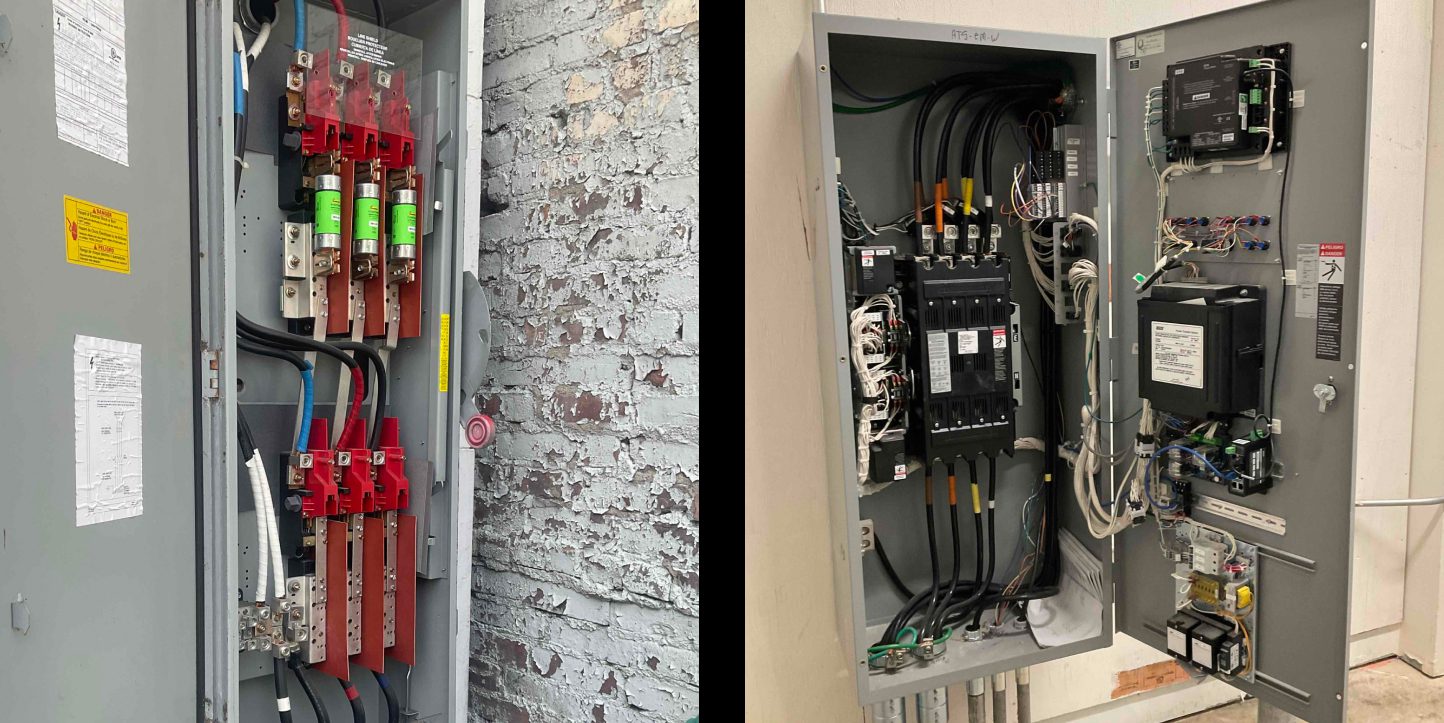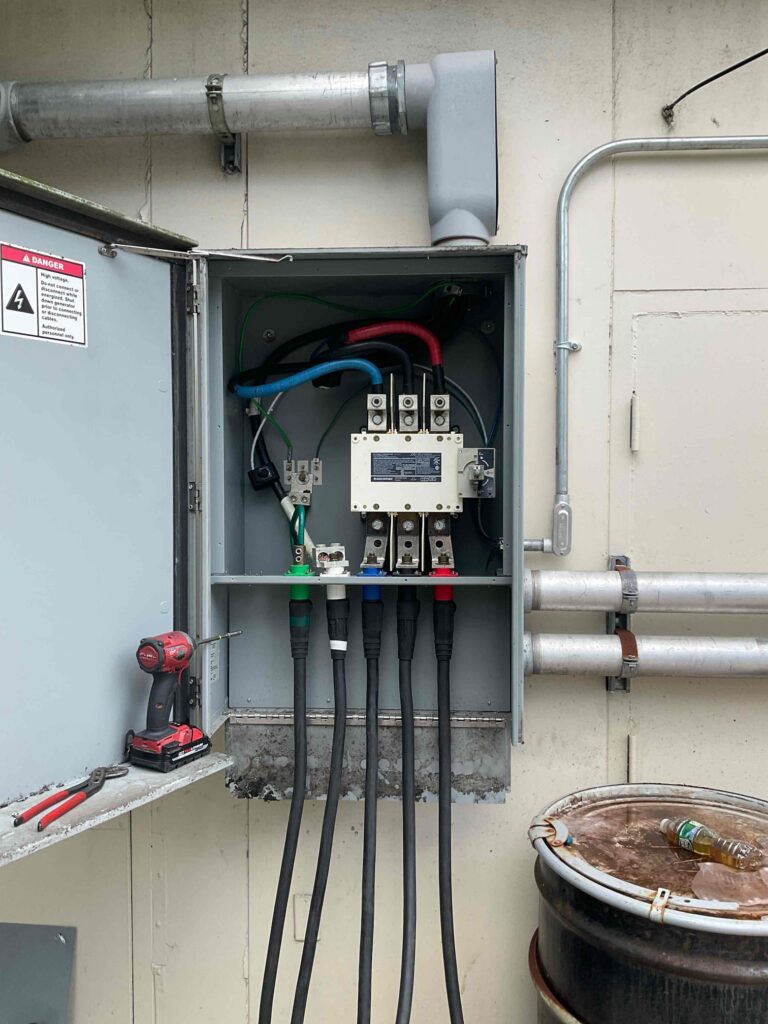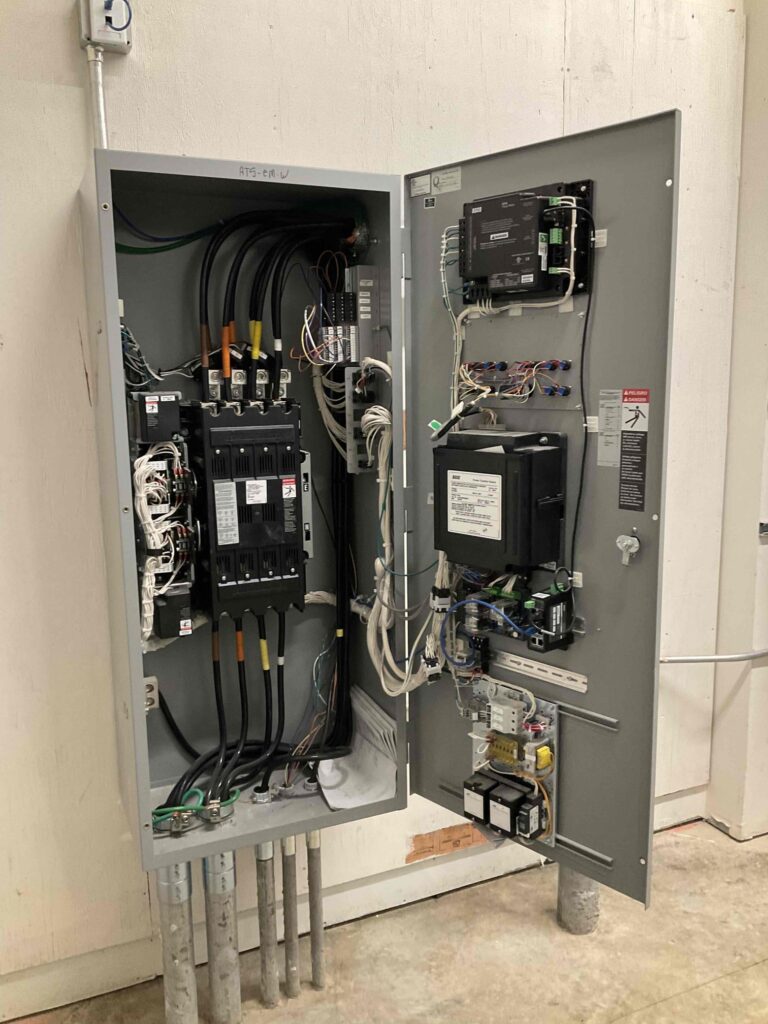Generator Connection Box vs. Transfer Switch: What’s the Difference?

When it comes to backup power solutions, understanding the different components and their functions is crucial for ensuring a reliable and efficient system. Two key elements in this setup are the generator connection box (also known as a docking station) and the transfer switch. While they both play vital roles in the operation of backup power systems, their functions and applications differ significantly.
Table of Contents
What is a Generator Connection Box?

A generator connection box, or docking station, is an electrical device that provides a safe and convenient way to connect a portable generator to a building’s electrical system. It typically consists of a weatherproof enclosure with a receptacle for plugging in the generator and a set of terminals connected to the building’s electrical panel. These are typically located outside the building.
Key Features of a Generator Connection Box:
- Accessibility: Provides quick and accessible point to connect a portable or rental generator to the electrical system.
- Safety: Ensures that the connection is secure and protected from environmental elements, reducing the risk of electrical hazards. Removes the need to run power cables from the generator to the buildings electrical room.
What is a Transfer Switch?
A transfer switch is a device that transfers the electrical load from the primary power source (usually the utility grid) to a backup power source (such as a generator) in the event of a power outage. These are typically located in the electrical room.

Key Features of a Transfer Switch:
- Seamless Transition: Minimizes downtime by providing a smooth transition between multiple power sources.
- Safety: Prevents backfeeding, which occurs when power flows back into the utility lines, posing a risk to utility workers and damaging equipment.
Differences Between a Generator Connection Box vs. Transfer Switch
Function:
Generator Connection Box: Primarily serves as a point of connection for portable or rental generators to the building’s electrical system.
Transfer Switch: Transfers the electrical load between the primary power source and the backup power source, ensuring continuous power supply during outages.
Operation:
Generator Connection Box: Requires manual connection and disconnection of the generator, and typically used with manual transfer switches or interlock kits.
Transfer Switch: Can be automatic or manual. Automatic transfer switches (ATS) switch the power source automatically, while manual transfer switches (MTS) require manual operation.
Application:
Generator Connection Box: Suitable for temporary or portable generator setups, or as a back-up incase the primary generator is down for maintenance or repairs
Transfer Switch: Essential for systems with permanently installed generators, used where continuous power is critical.
Safety:
Generator Connection Box: Provides a safe and weatherproof connection point but does not typically handle load transfer or prevent backfeeding on its own.
Transfer Switch: Ensures safe load transfer and prevents backfeeding, protecting both the building’s electrical system and utility workers.
